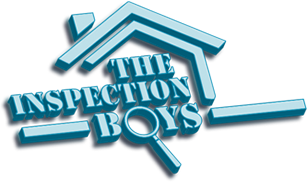When it comes to purchasing, maintaining, or selling a property, ensuring its structural integrity and safety is paramount. This is where a four-point inspection comes into play. A four-point inspection is a specialized examination that focuses on four essential aspects of a property: the roof, electrical system, plumbing system, and HVAC (Heating, Ventilation, and Air Conditioning) system. This thorough assessment provides invaluable insights into a property’s condition, helping property owners, buyers, and sellers make informed decisions. In this article, we will delve into the significance of a 4 point inspection and its process.
Understanding the Four-Point Inspection
A four-point inspection is a targeted evaluation designed to assess key components of a property that are essential for its habitability, safety, and functionality. The four main areas of focus are the roof, electrical system, plumbing system, and HVAC system. By scrutinizing these components, inspectors can identify potential issues, hazards, and maintenance requirements that may affect the property’s value, insurance coverage, and overall well-being.
Key Components of the Four-Point Inspection
1. Roof Inspection: The roof serves as the first line of defense against the elements, making its condition crucial for maintaining a secure interior. During the roof inspection, inspectors assess the roofing materials, flashing, gutters, and overall structural integrity. They look for signs of leaks, damage, and wear that could lead to water infiltration and subsequent deterioration.
2. Electrical System Inspection: The electrical system is a complex network that demands careful examination to ensure safety. Inspectors evaluate the electrical panels, circuits, outlets, and grounding. They identify outdated wiring, improper installations, and potential fire hazards. Addressing these concerns can prevent electrical accidents and enhance the overall safety of the property.
3. Plumbing System Inspection: A well-functioning plumbing system is essential for water supply, sanitation, and preventing property damage. During the inspection, inspectors assess pipes, fixtures, water heaters, and drainage. They search for leaks, corrosion, blockages, and other plumbing issues that could lead to water damage, mold growth, and compromised water quality.
4. HVAC Inspection: The HVAC system plays a vital role in maintaining indoor comfort and air quality. Inspectors evaluate heating, cooling, ventilation, and ductwork. They identify issues such as inefficient components, malfunctioning systems, and inadequate ventilation. Addressing these problems can enhance energy efficiency, reduce utility costs, and create a healthier living environment.
Process of Conducting a Four-Point Inspection
A successful four-point inspection involves several stages:
1. Pre-Inspection Preparation: Property owners should prepare by providing necessary documentation and ensuring access to the inspected areas. This preparation helps streamline the inspection process.
2. On-Site Inspection: Inspectors meticulously examine each of the four components, utilizing specialized tools and techniques. They document their findings, noting any issues, deficiencies, or safety concerns.
3. Reporting and Recommendations: After the inspection, inspectors compile their observations into a comprehensive report. This report includes detailed descriptions of identified problems, photographs, and recommendations for addressing them. The report is a valuable tool for prioritizing repairs, negotiating property transactions, and obtaining insurance coverage.
Benefits of a Four-Point Inspection
A four-point inspection offers numerous benefits to property owners, buyers, and sellers:
1. Enhancing Property Knowledge: By understanding the property’s strengths and weaknesses, owners can take proactive steps to maintain its condition and value over time.
2. Risk Mitigation and Insurance: Insurers often require a four-point inspection to assess potential risks. Addressing identified issues can result in better insurance coverage and reduced premiums.
3. Negotiating Property Transactions: For buyers and sellers, the inspection report provides an objective assessment of the property’s condition, aiding negotiations and ensuring a fair transaction.
In the world of real estate, knowledge is power, and a four-point inspection equips property stakeholders with the knowledge they need. By focusing on the roof, electrical system, plumbing system, and HVAC system, this inspection offers a comprehensive understanding of a property’s core elements. Whether you’re a homeowner, prospective buyer, or seller, a four-point inspection is an investment that pays dividends in terms of safety, value, and peace of mind.

